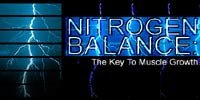
Recap

Last week, I discussed some of the rationale behind the importance of post-workout nutrition, with specific recommendations as to what a post-workout meal or shake (PWO) should contain.
 To View Top-Selling Post-Workout (PWO) Shakes, Click Here.
To View Top-Selling Post-Workout (PWO) Shakes, Click Here.
This week I'm delving into the science to review one specific study that measured the effects of different post workout drinks.

Recovery From Run Training: Efficacy Of A Carbohydrate-Protein Beverage?
2005, 15, 610-624

First, I understand that most of you aren't focused on running, but the results from this can be extrapolated; the important component is the fact that we're talking about some type of exercise training. Regardless of the type of exercise training, the goal is to adapt so future exercise capacity is improved, whether it's swimming, biking, power lifting, etc.
Always remember that training is a stress on the body, albeit, a positive one; it is then important, however, to recover from the particular stress.
As we discussed in the last article, recovery nutrition is one of the, if not the, most important feeding of the day (maybe tied with breakfast as the most important meal of the day).
From early research, we know that carbohydrates are crucial post workout. Many folks solely concentrate on protein; however, carbohydrates are the nutrients that will "refill" your muscles with energy, allowing you to train hard next time you hit the gym.
In fact, studies suggest that when carbohydrate is ingested immediately after exercise, it is much more effective in terms of refueling your body than waiting 2 hours post-workout. Okay, I think I've effectively hammered home that point. Carbs are crucial!
Recently, research is emerging to show protein may be just as important as part of this feeding. Not only is it necessary for optimizing nitrogen balance, but it may in fact enhance the function of carbohydrate and improve glycogen resynthesis because of the boost in insulin from the added protein. However, the specific mechanism for this occurrence is not clearly defined, so this study attempted to do just that.
 |
What Does "Nitrogen Balance" Refer To? The difference between the amount of nitrogen taken in and the amount excreted or lost. If you excrete more nitrogen than you consume, your body will break down muscle tissue to get the nitrogen it needs (negative nitrogen state). Thus, muscle loss occurs. If, however, you consume more nitrogen than you excrete, you will be in an anabolic (muscle building) state (positive nitrogen state). |
 |
 |
||
| RELATED ARTICLE | ||
|

 Subjects:
Subjects: 
Eight male and female runners participated in this study. All subjects were highly trained runners, had a mean age of approximately 29 years and were approximately 12% body fat. Physically, these young athletes were in excellent shape. The study was a double-blind, cross-over design, with a goal of examining the effects of three different beverages during recovery:
- CHO-P (8% sucrose, 2.3% whey protein isolate containing BCAA, glutamine, and vitamins C & E)
- CHO10 (isocaloric solution, made up of 8% sucrose and 2.3% maltodextrin)
 Note: this isocaloric drink is important because previous research has been criticized for not accounting for caloric differences, which would affect the outcome.
Note: this isocaloric drink is important because previous research has been criticized for not accounting for caloric differences, which would affect the outcome. - CHO6 (Gatorade, which is a 6% sucrose/glucose drink)
The subjects were all instructed to follow the same diet, which provided approximately 55% carbohydrates, 15% protein, and 30% fat. To help control for this, subjects kept 3-day diet records for analysis to ensure they were "on track." Each subject consumed each beverage throughout the trial, which is what the "crossover design" means.
Subjects were instructed to run 21 km (approximately 13 miles), which is a distance known to significantly reduce muscle glycogen stores. Immediately following this run, subjects returned to the lab and ran on a treadmill at a workload of approximately 90% VO2max.
 |
What Is Glycogen? Glycogen is the principal stored form of carbohydrate energy (glucose), which is reserved in muscles. When your muscles are full of glycogen, they look and feel full. |
 |
 |
||
 |
What Does VO2max Mean? VO2max is defined as the maximum amount of oxygen that your body can take in, deliver, and use in one minute. It is limited both by the amount of oxygenated blood the lungs and circulatory system can process, and by the amount of oxygen the muscles can extract from the blood. It is estimated that VO2max goes down about 1% per year. The fall in marathon performance is known to be about 13% per decade. Click here to find out how to calculate your own VO2max! |
 |
 |
||
After this demanding treadmill bout, subjects were fed 1.0 g/kg body weight per hour of the CHO-P and isocaloric CHO10 beverages during the 2 hour recovery. Those in the CHO6 group consumed this beverage during that period, but had to be supplemented with additional beverage because it could not provide the required carbohydrates when compared to the other beverages. Regardless, the proper dose was ultimately consumed for all groups.
Blood samples were taken 1 hour into recovery to measure glucose, insulin, and lactate levels. These measures are essentially determinants in how your body is utilizing the ingested carbohydrates and the effect the run had on the muscles. Creatine kinase was also measured, which is a measure of muscle damage.
After a 2-hour recovery period, which included the beverage consumption, subjects repeated the run to exhaustion at approximately 90% VO2max. By the way, for those who have ever done an exercise test like this and run to exhaustion, it's not enjoyable or easy... it's physically and mentally demanding, so the powerlifters who might balk at this test should think again.
| VO2MAX CALCULATOR |

 Results:
Results: 
Blood glucose was significantly elevated at 45 minutes after recovery with CHO10 compared to CHO-P or CHO6. Mean blood insulin levels were also significantly higher in the CHO10 vs. CHO-P and CHO6 groups. Let's see if this meant anything on performance...
The improvements in performance from the second treadmill test did not differ significantly among any of the 3 treatments. The subjects who consumed the CHO-P and CHO6 beverages ran 40.5% longer than no drink and 29.6% longer than no drink, respectively.
Ratings of muscle soreness were significantly lower (half as much) for those who consumed the CHO-P beverage vs. the CHO10 or CHO6 solutions. This is a positive finding and one I think might be most relevant to weight training; it's not necessarily fatigue that prevents you from subsequent training, but often it's the soreness.
Surprisingly, though, levels of creatine kinase, which measures muscle soreness, were not significantly different among groups - ratings of muscle soreness were, but not blood markers of muscle damage.
Heavy training, eccentric training, and sometimes just switching programs with new exercises causes muscle soreness; if a CHO-P beverage can ameliorate this feeling, lifters would be better suited for more training!

A Few Take Home Points
- Consume a post-workout drink (PWO) immediately after the workout. The longer you wait the less benefit the drink will have.
- This drink should primarily contain carbohydrates along with some protein. As mentioned in my previous article, this should be a 2-4:1 ratio of carbohydrates to protein, or 2-4 grams of carbohydrate for every 1 gram of protein.
- The carbohydrates need to be high glycemic, simple carbohydrates that are absorbed rapidly and increase glucose and insulin levels.
- Protein should be a quickly absorbed protein, such as whey protein isolate.
- This meal should not have fat or fiber, which both slow absorption.
One great, very simple product that fits the bill described above is fat-free chocolate milk; it provides the CHO-P in a 3:1 ratio, right in line with what the research has suggested is beneficial.
 To View Top-Selling Recovery Nutrition Products, Click Here.
To View Top-Selling Recovery Nutrition Products, Click Here.

